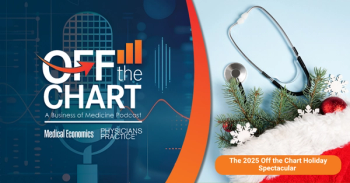
High-value care strategies
The push is on for physicians to embrace the concept of high-value care, providing patients with appropriate treatment while avoiding wasteful or unnecessary tests. But high-value care requires physicians to navigate many pitfalls, including lack of time to talk with patients and malpractice pressures.
The push is on for physicians to embrace the concept of high-value care, providing patients with appropriate treatment while avoiding wasteful or unnecessary tests. But high-value care requires physicians to navigate many pitfalls, including lack of time to talk with patients and malpractice pressures.
After years of being told about the importance of lowering blood sugar levels, it can seem a bit jarring for older patients to learn that they don’t need to be quite so vigilant, says David Shute, MD, a Portland, Oregon internist.
So Shute tells his patients that this new approach, which no longer pushes most adults ages 65 and older to achieve A1c levels below 7.5%, comes from the
That blood sugar guidance is one of more than 300 medical recommendations developed through the
From federal officials to professional groups, the distinction is being drawn increasingly between what’s dubbed-depending on the jargon involved-low- and high-value (or quality) care.
Cost-effectiveness efforts lie at the heart of Medicare’s Shared Savings Program, as well as numerous other guidelines and initiatives. To date, the
Related:
Meanwhile, both primary care physicians and specialists face practical and emotional pressures, including scant time to flesh out treatment options, an interest in preserving the doctor-patient relationship and malpractice pressures, among others. One recent study in the journal Neurosurgery found that neurosurgeons were 50% more likely to practice defensive medicine in states considered to have a high-risk versus a low-risk liability environment.
Some technology-related solutions, via electronic health records, are being implemented in the hopes of steering doctors away from low-value care. Even so, the heart of the decision involves a two-way conversation and relationship, says Harry Gewanter, MD, a pediatric rheumatologist in Richmond, Virginia.
A common scenario in his office: parents concerned that Lyme disease might be the source of their child’s aches and pains. Gewanter will explain why a test is not recommended, given the lack of any red flag symptoms or exposure, and that the subject can be revisited if symptoms persist.
Frequently he’s successful. But he’s also gone ahead and ordered the test.
“Sometimes you are going to do something that you may not exactly agree with, but you know for that family it’s a very important issue,” Gewanter says. “If ordering a lab test is going to lower everybody’s stomach acid and help keep them from going to another doctor and another doctor and another doctor, then you do it.”
Defining value
At the heart of this evolving discussion is what constitutes value: to what degree should the cost of care, rather than clinical evidence alone, be part of the equation? Shifting semantics complicate the issue, Gewanter says. “People I think are using value and quality and cost interchangeably,” he says.
Another factor: who is the judge? “The problem with healthcare is that the value is defined by the patient, not by me,” says Kevin Bozic, MD, MBA, chairman of the Council on Research and Quality at the
Still, considerable opportunity exists for cost-effective improvement, according to findings from several recent studies:
Despite repeated initiatives related to antibiotic overprescribing, the percentage of adults with sore throat getting the drug has remained stable, at 60%, from 2000 to 2010, according to findings published in JAMA Internal Medicine. Yet only 10% of sore throats are caused by group A Streptococcus.
The use of expensive imaging tests (CT scan or MRI) to assess headache symptoms jumped significantly over a decade period, from 6.7% of headache-related visits in 1999-2000 to 13.9% in 2009-2010, according to findings in the
In a 2012 survey, 85% of 261 U.S. internal medicine residency programs agreed that medical education could play a role in curtailing healthcare costs, according to results published last year in JAMA Internal Medicine. But just 15% of programs had developed a cost-conscious curriculum; an additional 50% were working on one.
Related:
The Choosing Wisely campaign, launched by the non-profit foundation that’s affiliated with the American Board of Internal Medicine, has been developing its recommendations based on clinical evidence rather than the price tag, according to a spokesman. Some of its primary care targets that have been defined as low value: imaging studies for non-specific and recent low back pain; annual electrocardiograms for low-risk patients without heart symptoms; routine pre-operative testing for low-risk surgeries; and annual checkups for adults not complaining of symptoms.
The recommendations are not absolutes, but guidelines for initiating a conversation, says Shute, who consults on the campaign. “It leaves room for professional judgment and it leaves room for some patient choice,” he says.
Imaging and related services in particular are frequently cited on the Choosing Wisely lists, according to a 2014 analysis in the
Another trend, cited by the 2014 NEJM analysis, is that medical groups tend to name services as low-value if they fall outside their own specialty’s purview. Primary care groups tend not to cite cognitive services as low value, with the notable exception of discouraging the annual physical, the researchers wrote. They also called out the American Academy of Orthopaedic Surgeons for not including any major surgeries and only one minor procedure in its list of five recommendations.
In a statement issued following the NEJM analysis, the medical organization defended its choices, noting that its advice to limit the use of glucosamine and chondroitin for joint relief targeted spending that exceeds $2 billion annually. One challenge in developing the recommendations was the limited number of higher-quality studies available, says Bozic, who chairs the group’s
Bozic also expresses a broader critique of what he views as the absolutist approach of such lists of treatments to avoid. “That’s the old-fashioned paternalistic view-that I’m the doctor and I know what’s best,” he says.
Instead, patients should be given more nuanced information-Bozic points to a battery of clinical guidelines on the AAOS website-that allows them to sort through the matrix of options and costs. A patient might decide to try a procedure deemed of more limited value if he or she has exhausted other treatments, he says.
Navigating conversations
As doctors initiate these sorts of conversations about value and relative necessity, they should give their patients some credit until proven otherwise, says Jeffrey Linder, MD, MPH, a general internist at Boston’s
“We’ve all been sort of scarred by these very rare, contentious encounters with patients who really want antibiotics,” he says. “We over-generalize that experience to all of our patients.”
But the vast majority of patients primarily want reassurance that a more serious infection hasn’t flared, as well as short-term help with their respiratory miseries, Linder says. Once the risks are explained, typically they don’t want to take anything that won’t help them, and could be potentially harmful, he says.
Along those lines, Gewanter adopts a two-stage approach. He explains why a patient’s symptoms don’t appear to be bacterial in nature and he makes clear that the patient can call his office in a few days if symptoms change or worsen. For patients he knows well, he might write a prescription and ask them to fill it within 48 to 72 hours if they develop a higher or unrelenting fever, among other symptoms.
Related:
What he’s trying to avoid, Gewanter says, is creating a communication breakdown in which the next time a frustrated patient might seek the antibiotics he or she desires at a retail clinic or urgent care center. That outcome results not only in potentially unnecessary tests and costs, but also the patient might not reveal having sought care elsewhere if forced to return to Gewanter’s office with diarrhea or some other side effect, he says.
Doctors who don’t have a long-term relationship with their patient face the challenge of building trust quickly, says Christopher Moriates, MD, a hospitalist at
This is particularly challenging when public awareness hasn’t caught up with a change in practice, Moriates says. He recalls one exchange with a patient who wanted a blood transfusion, which he was accustomed to receiving during prior gastrointestinal bleeds.
Moriates told the patient that transfusions were no longer recommended by the
“He was definitely trying to figure out, `Do I trust this person? Why are they telling me this? I know my experience from the past. Why is this doctor telling me something different?’” Moriates recalls.
Practice strategies
In discussing medical options with patients, finding the balance between cost and quality is far from a new conversation, says Matthew DeCamp, MD, PhD, an internist and assistant professor at the
Being open with patients about the heightened focus on higher-value care is key, not just in individual conversations, but also at he practice level, DeCamp says. One approach might be to create related educational materials, highlighting the practice’s values and criteria. A referral to a particular cardiologist could be accompanied with details about how the doctor rates on quality metrics, he says. A plan for treating lower back pain could explain why physical therapy is preferred as the first step, before ordering an imaging test.
Building guidance into electronic health record systems also holds potential for encouraging broader changes in habits, says Mitesh Patel, MD, an assistant professor of medicine and health care management at the University of Pennsylvania and an author on the recent JAMA Internal Medicine study looking at cost-conscious curriculum.
Related:
In another study that Patel published last year in the
Further efforts to incorporate appropriateness criteria for imaging into electronic systems also are gaining steam. In 2017 a law is slated to take effect requiring doctors to consult physician-developed criteria when ordering advanced imaging tests for Medicare patients.
The
“The intent is to help primary care physicians to choose the right tests and help them do it quickly and safely for their patients,” says Debra Monticciolo, MD, FACR, chair of the American College of Radiology
Take a patient discussion involving the aspiration of a cyst in the breast, a procedure that Monticciolo performs hundreds of times each year. When the fluid emerges clear with no signs of blood, she shows it to the patient and explains that the chances are “virtually zero” that a pathology analysis would find anything worrisome.
But, Monticciolo says: “I don’t want to throw the fluid away unless the patient feels comfortable.” A few times each year, the patient will decide that she’d prefer to pay the extra cost to allay any nagging worries. So Monticciolo sends the specimen to the lab.
Low-value treatments to watch out for
Imaging for low back pain
Avoid imaging for low-back pain within the first six weeks unless certain red flags are present, including severe or progressive neurological deficits. Imaging for low back pain does improve outcomes but increases costs.
Antibiotics for sinusitis
Do not routinely prescribe antibiotics for acute mild-to-moderate sinusitis unless symptoms last for seven or more days, or symptoms grow worse after initial improvement. Most sinusitis in ambulatory care is due to viral infection, but accounts for 16 million office visits annually and $5.8 billion in healthcare costs.
EKGs for low-risk patients
There is little evidences that detecting coronary artery stenosis in asymptomatic patients at low risk for coronary heart disease improves health outcomes, and false-positive tests can lead to unnecessary invasive procedures, over-treatment and misdiagnosis.
Pre-operative chest radiography
Unless cardiopulmonary symptoms are present, pre-operative chest radiography rarely provides any meaningful changes in patient management or outcomes.
Pap smears on women younger than 21
Most observed abnormalities in adolescents regress spontaneously, so Pap smears for teenagers can lead to unnecessary anxiety, testing and healthcare costs.
Routine PSA testing
Convincing evidence exists that prostate-specific antigen (PSA) testing leads to substantial over-diagnosis of prostate tumors. Physicians should not order PSA screening unless prepared to engage the patient in shared-decision making that enables an informed choice.
Pelvic exams for oral contraceptives
Data do not support performing a pelvic or breast exam before prescribing oral contraceptives. These medications can be safely prescribed based on medical history and blood pressure measurements.
CAS screening
Good evidence exists that the harm of screening for carotid artery stenosis outweighs the benefits in adult patients with no symptoms. Screening can lead to unnecessary surgery and health complications.
Sources; Choosing Wisely, American College of Physicians, American Academy of Family Physicians
Newsletter
Stay informed and empowered with Medical Economics enewsletter, delivering expert insights, financial strategies, practice management tips and technology trends — tailored for today’s physicians.








